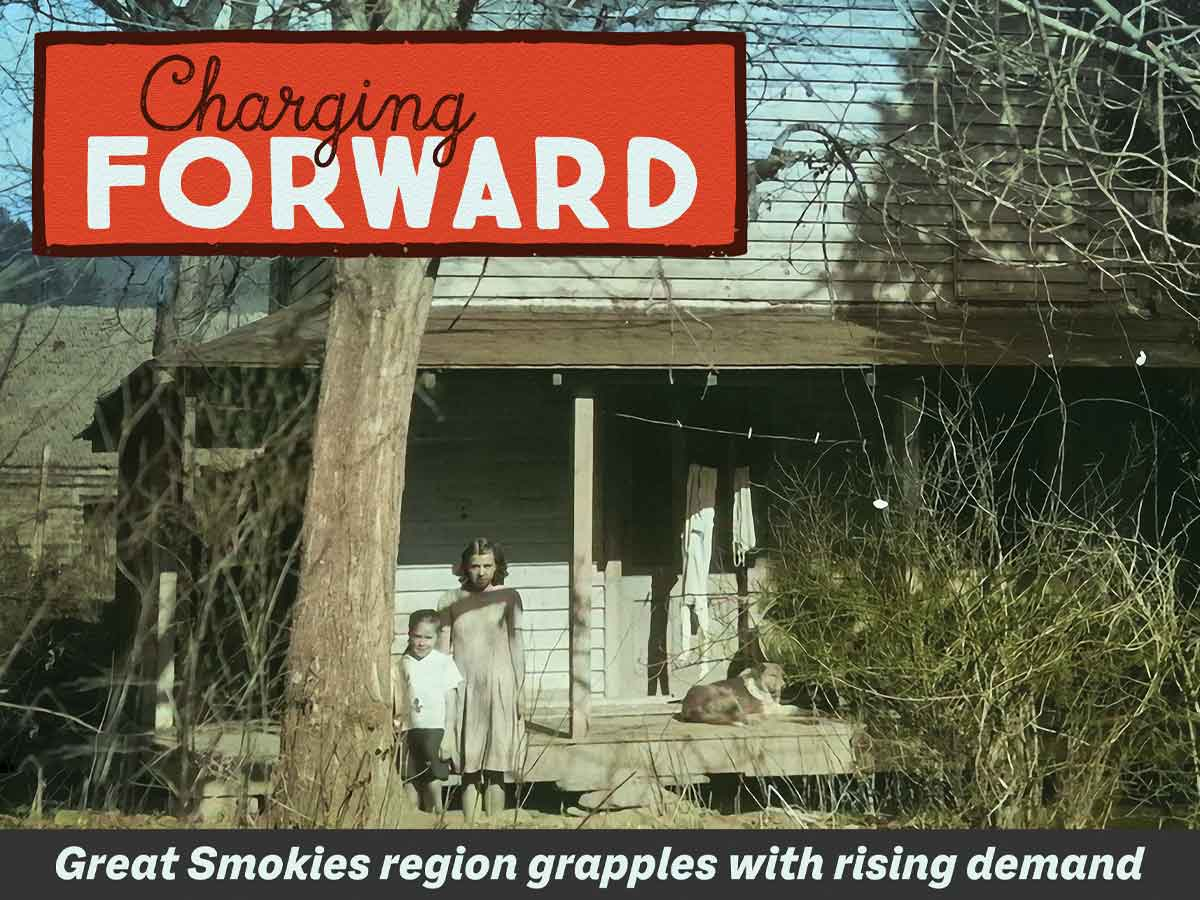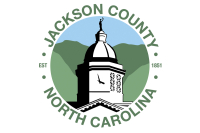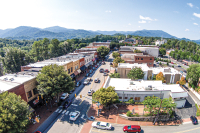Booming Times, Busted Budgets: Growing visitation strains resources in and around the GSMNP

Christine Cole Proctor was home alone with her big sister at the family cabin on Forney Creek when she heard an unfamiliar rumble climbing the isolated mountain road. It was a car — the first they’d ever seen scale the rugged route.
Now 86, Proctor was just 5 or 6 that day the car stopped outside their Swain County home and unloaded a pair of Tennessee Valley Authority representatives. The TVA staff were tasked with preparing the way for construction of Fontana Dam, in what is today part of the Great Smoky Mountains National Park. They snapped a photo of the two girls and their dog standing on the cabin’s front porch.
Proctor had no idea the visit meant their comfortable world of farming, church and the sawmill where her daddy earned a steady paycheck was about to disappear.
It was the early 1940s, and America was at war. Winning would require enough electricity to build the necessary bombs, ships and airplanes, and they were in a prime location to feed hydropower to places like Oak Ridge National Laboratory and the enormous aluminum plants over the border in Alcoa, Tennessee.
But creating the reservoir to power Fontana Dam required submerging and isolating roads in the region, including family cemeteries and once-bustling communities. Families like Proctor’s were forced to leave their land forever, often paid a pittance in return.
“When the government come through, buying up the land, they didn’t get what the land was actually worth,” said Proctor. “They had to take less, and most people could not resettle on what they were given for the land.”
Related Items
The photo the TVA staffers took now hangs on the wall of Proctor’s home in Bryson City, just 2 miles from the national park boundary. It’s a permanent reminder of how certainties can vanish overnight.
Her childhood home is now part of an 816-square-mile tourist attraction that people come from across the world to see: the Great Smoky Mountains National Park. In 2021, the park logged 14.1 million visits.
And Swain County — all of Western North Carolina, really — is experiencing a tourism boom bringing yet another era of change. Park visitation has grown steadily since Congress created it in 1934, but the last 10 years have seen an explosion in popularity — one nobody knows how to respond to. Tourism creates jobs, spurs sales and boosts tax revenues, but the onslaught is also straining public resources and pricing locals out of housing.
More than 50,000 vehicles a year now travel Lakeview Drive, the road from Bryson City that dead ends along the shore of Fontana Lake. Somewhere in the wilderness is the patch of land Proctor left behind, watching as the lake backed up before their eyes.
“It covered the best part of Swain County,” said Proctor. “It really did.”
•••

- A high school band plays on the town square in Bryson City in a photo taken by “Doc” Kelly Bennett, a Swain County pharmacist and politician who lived 1890-1974. Hunter Library/WCU photo
Proctor’s eyes sparkle behind large-framed eyeglasses as she leans forward in the quilted padding that lines her wooden kitchen chair, recounting her home in Forney Creek.
Her comfortable, single-level brick home is just outside downtown Bryson City, nearly hidden from the road by a cloak of mature oak trees, their leaves a confetti of reds, greens and browns beneath a gray November sky. It’s just a mile down the road from the tiny logging town where Proctor and her family landed after they were ousted from the mountain.
Her father sought work in lumber mills. When she grew up, Proctor married a man who worked at the Fairlane Hosiery Mill. She checked out customers at the A&P grocery store. It was a blue-collar kind of life, and Proctor loved it. Over the years those industrial jobs disappeared as companies found it cheaper to make their products elsewhere.
If not for tourism, Bryson City could have become one more dried-up ghost town. Park visitation grew through the 1990s, and the 1997 opening of Harrah’s Cherokee Casino Resort in neighboring Cherokee injected a new supply of lucrative jobs. Where winter unemployment had typically spiked north of 20%, it fell below 10%.
Besides its proximity to the park and the casino, Bryson City is home base for the Great Smoky Mountains Railroad and the nearest town to the Nantahala Outdoor Center, both magnetic tourist attractions. It has two breweries and a Main Street bursting with well-kept shops and restaurants. It’s a tourist destination with an authentic “mountain town” feel.
“It’s kind of keeping up with the times, but yet it hasn’t lost that sense of family, small-town feeling, all that stuff you see on Hallmark channels. It’s still got that,” said Karen Marcus, a Swain County native, licensed psychologist, and publicity and programming chair for the Swain County Genealogical Society.
Marcus, now in her mid-60s, grew up as tourism was just starting to take hold. Generations ago, her great-great-great-great grandfather Abraham Enloe owned the land that now houses the Oconaluftee Visitor Center. Marcus’ childhood home was in Ela, 5 miles outside Bryson City along U.S. Highway 19.
Marcus, her sister and three brothers would fish, play baseball and “Cowboys and Indians,” and go tubing on Deep Creek. Her dad and a cousin liked to go fishing; back then, so few people traveled U.S. Highway 441, the main route to and through the park, that they could lay socks on the road to let their wives know where to pick them up.
As road trips started becoming more popular with the American public, little motor lodges popped up all along the route. Locals would sometimes supplement the housing inventory by offering up space in their own homes.
Annual visitation stayed below 7 million during Marcus’ childhood. By 2014, it was consistently topping 10 million. The Smokies posted record-high visitation numbers for five consecutive years prior to the COVID-19 pandemic. National Park Service statistics going back to 1979 list it as the nation’s most-visited national park every year, with visitation typically more than double that of the runner-up.
Attendance surged to new heights during the pandemic, as people sought out national parks for outdoor, socially distant vacations. More than 60% of the country’s population lives within 800 miles of the Smokies, making the park a prime destination.
Even though it closed completely for six weeks, visitation dropped only 3.6% from 2019, which had been a record-breaking year at 12.5 million visits. And 2021 numbers came in nearly 13% above 2019, at 14.1 million.
By comparison, overall National Park Service visitation increased by 6.5% between 2011 and 2021. And while 2022 numbers are lower so far than 2021, they’re still well above pre-pandemic levels.
The formerly sleepy Smokies entrances near Bryson City are seeing similar extreme increases. Visitation at Lakeview Drive, also known as the Road to Nowhere, was 44% above the 10-year average in 2021, while the Deep Creek entrance was 25% higher.
The numbers translate to a tangible shift in the Smokies experience. Trailhead parking lots are overflowing, shoulderless mountain roads are lined with parked cars, and some trails look more like grocery store lines than mountain getaways.
“I live 2 miles from Deep Creek, but Deep Creek is a place I avoid in the summertime,” said Ben King, 33, a Swain County native and Bryson City alderman who co-owns Bryson City Outdoors, a gear shop and tap room.
“It’s a place I love to go and a lot of locals love to go, but in the summer it’s too much,” King said. “There’s no place to park, and at least the first mile to 2 miles of trail is so crowded you feel like you’re at a shopping mall.”
•••

- A photo taken by “Doc” Kelly Bennett from the mouth of the Nantahala River near Almond shows the construction of Fontana Dam. Hunter Library/WCU photo
Even before the TVA came knocking, forced resettlement was a recurring theme in Western North Carolina.
It happened to the Cherokee first, as a series of increasingly unfavorable treaties between the U.S. government and Native American tribes culminated in the 1830s with the Trail of Tears .
While a small remnant of Cherokee managed to stay behind and form what is now the Qualla Boundary, home of the Eastern Band of Cherokee Indians, tens of thousands of Native Americans endured a brutal march from their ancestral homelands to reservations in the Midwest. Thousands died along the way.
By the time Proctor was born, a century had passed and white settlers had sculpted their own relationship with the land, scraping out a living from small farms carved into the rugged terrain and often supplementing it with wages from the sawmills that peppered the region. When Congress authorized the park’s creation in 1926, it signaled the start of the region’s next mass eviction.
In 1931, Tennessee and North Carolina transferred 300,000 acres to the federal government for the park’s creation. The park eventually grew to 522,427 acres, preserving the natural wonders of one of the globe’s most biodiverse regions and providing respite and adventure for millions of people.
But whether by voluntary sale or eminent domain, the settlers who had farmed the area’s 1,200 homesteads were forced to leave.
In the park’s first 15 years of existence, annual visitation exceeded 1 million only once, in 1941, the year after Franklin Delano Roosevelt dedicated it. Visitation grew from 4.5 million in 1960 to 6.8 million in 1970. While the park didn’t keep location-specific logs at that point, it’s fair to guess that most of those visitors arrived via the more accessible Tennessee entrances.
By the 1990s, Marcus had completed her first career as a hospital chaplain, earned her doctorate, and returned to Western North Carolina for a second career as a psychologist. Throughout that decade, Smokies visitation hovered between 8 and 10 million, but Marcus said you wouldn’t have known it based on her experiences backpacking in the park during those years.
“We went in on Saturday and came out Tuesday, and we did not see anybody on the land from the time we left Hazel Creek until we got within a mile of the tunnel,” she said. “You can’t do that nowadays.”
It’s doubtful that the park’s early leaders ever expected it to draw so many millions of visitors each year, said Smokies management assistant Dana Soehn. Nor is the infrastructure built to support those numbers.
The largest national park east of the Mississippi, the Smokies now has 16 official entrances. Due to a complicated legal history involving state legislation about Tennessee’s deed transfer and a 1992 federal law, the park can’t charge admission at any of them. Other large national parks typically charge $35 per vehicle for a seven-day pass and retain 80 percent of that revenue for in-park use.
The legal restriction in the Smokies prevents administrators from considering policies like daily admission caps, now adopted at some other national parks, and it means that the park’s budget isn’t increasing in step with its popularity.
On average, large national parks rely on congressional appropriations for less than half their budget and spend $15 per visitor. The Smokies draws 80% of its funding from the federal budget and spends $2 per visitor. Adjusted for inflation, the Smokies’ funding has fallen over time, causing its staffing levels to decline more than 10% in the past decade even as visitation surged.
The stark reality is that with its current resources, the park can’t fulfill its responsibility to the land it’s charged with managing. In April, Park Superintendent Cassius Cash proposed a controversial solution — requiring a paid permit to park anywhere in the Smokies.
On Aug. 15, he announced a decision. The permits — $5 per day, $15 per week or $40 per year — will be required starting March 1, 2023.
“What we need to do now is to have an influx of resources to be able to make the improvements we need to be able to allow for that sustainable visitation,” Soehn said. “But we’ll never be able to provide unlimited access for everybody for all places that they want to go to, because there’s just simply no space.”
Even if only 30% of people comply when the fee is first enacted, it will bring in an estimated $10 to $14 million annually at 2021 visitation levels, close to a 50% increase over the park’s current budget.
The parking fee represents a new era for a park that has always been free to use and enter. As one might expect, locals have strong feelings about the proposal on both sides of the spectrum. The proposal drew 3,766 comments—likely the most ever for a planning process in the Smokies, Soehn said. Overall, 51% of those comments were supportive with only 15% in opposition and 34% neutral, but the balance was different when looking at the 828 comments from the park’s six neighboring counties in North Carolina and Tennessee. Of those, 25% opposed the proposal, 25% supported it and 50% were neutral.
Opposition was strongest in Swain County, where only 11.6% of 138 commenters supported the proposal and 40.6% opposed it.
Henry Chambers, chairman of the North Shore Cemetery Association, a nonprofit dedicated to preserving graveyards and history in the area swallowed by the Fontana project, took a stand in favor, arguing in an extensive statement April 17 that the park needs the money and that locals, as owners of the park, should “step up to do what is needed.”
“I am making my stand in supporting the Park in getting what it needs to operate, in supporting my friends and the employees who work there,” he wrote. “If you want to hate me for my support, that is your business. No matter what happens, we are all like a yoke of oxen: we will move together, one way or another. If you want to see a beautiful well-maintained Park, join with me. If you want less, that is your choice and your decision.”
Others see the proposal as a thinly veiled disguise for an entrance fee. For locals, the Smokies feels more like a family graveyard or neighborhood park than a national icon. Being charged to visit feels like a slap in the face.
•••

- Visitors take in the view from the Clingmans Dome observation tower. Quintin Ellison photo
The day after the park announced the fee proposal, the Swain County Commissioners unanimously passed a resolution opposing it. Since then, each of the six counties bordering the park has either passed a resolution or sent a letter opposing the fee.
Through a voice vote in June, the N.C. House of Representatives approved a resolution calling on Congress to block the fee’s implementation. The resolution never made it to a vote in the Senate.
“I just feel like the park’s for all people, and no one should have to pay for the beauty of God’s creation,” said Rep. Mike Clampitt, adding that locals visiting the park to honor the graves of their ancestors should not be required to “chase down a permit” to do so.
With or without a fee, change is inevitable — park leadership has made that clear since the pandemic lit a fire under an already explosive situation.
In 2020, the park held a series of virtual public meetings to discuss how to address overuse at some of its most popular sites. Last year, it tested out techniques with a pilot program at Laurel Falls Trail, which attracts about 350,000 visitors annually. For three weeks last fall, people hoping to hike Laurel Falls had to either snag a parking reservation or ride a shuttle bus from Gatlinburg.
Overall feedback on the program was positive , Soehn said, and the park has spent much of 2022 working on long-term plans for the site. Permanent changes at Laurel Falls will be announced in time for the 2023 season. Simultaneously, Soehn’s team is working on a parkwide toolkit for managing popular areas. This could include shuttles and parking reservations at additional areas, among other potential approaches.
Marcus, of the Swain County Genealogical Society, said she knows something has to change, though it’s hard to see it happen. She’d rather see increased park staffing to manage visitor behavior than new fees and reservation systems.
But she’s conflicted. She’s seen what the park is like in October, when fall color is on full display and seemingly half the nation is there to witness it. Maybe reservation systems do make sense, at least for the extremely popular trails, though those regulations would come at a cost.
“It feels like we lose some freedom — independence, being carefree. That’s the thing I remember from childhood,” she said. “We could go up to the park, ride on the Parkway, and not have to worry about traffic up here in leaf season. I’m not sure how to verbalize it.”
For King, the Bryson City alderman, it’s a conversation that recalls California’s Yosemite National Park , which also faces crowding concerns. Now, reservations are required to even enter the park during peak season, with separate permits for backcountry camping or hiking the iconic Half Dome.
“That’s a theme park at that point — you’re waiting in line to get on a ride,” he said. “I really, really don’t want to see it get to that point, but I understand that there’s a huge strain on the resources and the land.”
•••

- Kids enjoy a cool summer ride down Deep Creek. Swain TDA photo
While the Smokies struggles to serve a ballooning number of visitors absent a similarly ballooning budget, Swain County is confronting a different conundrum.
Swain, like other counties in the region, is seeing unprecedented revenues from the occupancy tax included on hotel and AirBnb bills. In the first half of the 2021-22 fiscal year, the Swain Tourism Development Authority collected $1.11 million — more than any full year prior to the pandemic.
Neighboring counties report similar patterns. The second half of the fiscal year was less robust, with the majority of months posting a decline compared to 2021. But collections still came in about 5 percent higher than the previous year, at just under $2 million. For a county with an annual budget of about $20 million, that’s a lot of money.
However, state law dictates that the authority must spend the money within a strict set of rules. Generally speaking, two-thirds of occupancy tax proceeds has to be spent on travel and tourism promotion. The remainder can go toward tourism-related projects to attract new visitors.
“From our perspective, it’s a great tax,” said Jeremiah Wiggins, the Swain authority’s chairperson. Non-residents pay it, but residents benefit.
However, with an unprecedented flood of tourists already pouring into Western North Carolina, some community leaders are questioning spending all that money on more ads and amenities to bring even more people to the mountains.
“Once this place has been discovered by all these people, are we constantly trying to find new customers on top of the return customers we’ve created?” King asked.
Tourism also imposes costs on the town that the money can’t be used to pay for, said King. Last year, Bryson City’s board imposed a moratorium on new water and sewer connections because the infrastructure is failing, and the town was left scrambling to figure out how to fund and implement millions in repairs —a heavy lift for a town of fewer than 2,000 people.
Sylva, the seat of Jackson County and Swain’s neighbor to the south, battles similar issues. Despite 2021-22 revenue coming in 18% above the previous fiscal year, the town still struggled to cover its baseline administrative costs and fund new police officer positions —positions that were necessary, said Police Chief Chris Hatton, because high visitation has effectively multiplied the demand.
On top of all that, there’s an ever-deepening housing crisis that the conversion of long-term rentals to more lucrative vacation properties is further exacerbating.
Asked whether he’d support legislation loosening the spending restrictions on occupancy tax money, King was quick to reply.
“I don’t know why it hasn’t already come up,” he said.
Wiggins agreed that the legislation “isn’t written perfectly for today’s world” and favors “aggressive interpretations” of the law governing how Tourism Development Authority money is spent. Recently, the Swain authority used occupancy tax funds to renovate the community pool. While not a typical tourism project, Wiggins believes that the right upgrades will attract tourists while also serving the local community.
Nick Breedlove, Tourism Development Authority director for Jackson County, is cautious about that type of approach but supports moving away from marketing-only spending. Both Jackson and Haywood County, which also forms part of the park, allocated $500,000 this year for a new “tourism capital projects” initiative.
“The goal was to take some of those dollars that the visitors spent and reinvest them into the community, not just for visitors,” Breedlove said.
•••

- Visitors to Clingmans Dome take a selfie from the observation deck. Quintin Ellison photo
It’s a weekday afternoon at the beginning of November, typically a shoulder season here, but driving through Bryson City’s pint-sized downtown is a slow process.
Traffic halts as people cross back and forth on faux-brick crosswalks, bright yellow signs warning motorists that pedestrians are in charge.
Downtown ebbs and flows in time with the train, which instead of hauling fresh-cut logs or carefully hewn planks now carries tourists to Dillsboro and the Nantahala Gorge. They queue for coffee and commandeer restaurant tables while waiting for their ride to depart. The train whistle blares a warning, and as suddenly as they descended, the tourists are gone — well, most of them anyway. These days, Bryson City is rarely deserted.
It’s a different place than the town where Proctor, Marcus and King spent their childhoods. But any former child would likely say the same about their hometown, too.
“It’s quite different,” said Marcus. “It feels different. But it needs to grow.”
Growing up the son of minimum-wage textile mill workers in the 1980s, Wiggins also knew a different Bryson City than today’s thrumming downtown. And he needs no prompting to say which version is better.
“In my own personal experience, if I compare the time period now with the time period then, I would tell you, hands down, things are much better now from an economics perspective than they were then,” he said.
But there’s a balance to be struck, and Wiggins is acutely aware of the need to balance welcoming the world to the beauty of the Great Smoky Mountains without sacrificing the very qualities for which they are so beloved.
“There is a connection that you have with this area that you don’t have anywhere else, and I don’t think you’ll find it anywhere else,” said Marcus. “There’s a spirit there that you can sense.”
This story was originally published Aug. 11 in The Assembly, available online at theassemblync.com.
What is The Assembly?
Founded in 2021, The Assembly is a digital magazine featuring deeply reported, nuanced stories about the people, institutions and ideas that shape North Carolina.
Recent stories include a profile of Senator Thom Tillis and his growing reputation as a bipartisan dealmaker, a look at how a politically diverse United Methodist Church in Statesville is navigating a denominational rupture over homosexuality, and the story of how the Greensboro News & Record changed from a thriving newspaper to a shell of its former self, done in by years of media-conglomerate cuts.
The Assembly offers readers one article per month free of charge, with full access for $4 per month or $40 per year. Read more at theassemblync.com.













